|
|
|

|
|||||

|
|

Lifting and material handling equipment company Terex (NYSE:TEX) reported revenue ahead of Wall Street’s expectations in Q2 CY2025, with sales up 7.6% year on year to $1.49 billion. The company’s full-year revenue guidance of $5.4 billion at the midpoint came in 1.2% above analysts’ estimates. Its non-GAAP profit of $1.49 per share was 6.5% above analysts’ consensus estimates.
Is now the time to buy Terex? Find out by accessing our full research report, it’s free.
With humble beginnings as a dump truck company, Terex (NYSE:TEX) today manufactures lifting and material handling equipment designed to move and hoist heavy goods and materials.
Examining a company’s long-term performance can provide clues about its quality. Any business can put up a good quarter or two, but the best consistently grow over the long haul. Over the last five years, Terex grew its sales at a decent 8.5% compounded annual growth rate. Its growth was slightly above the average industrials company and shows its offerings resonate with customers.
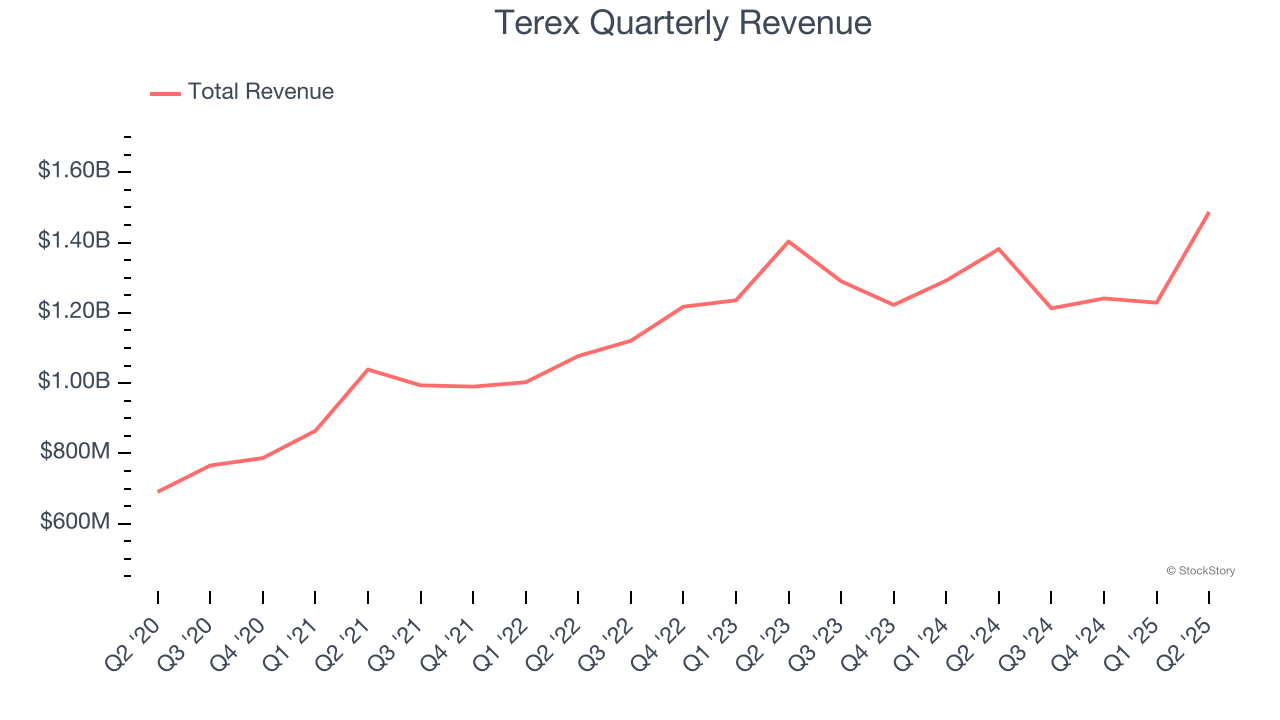
We at StockStory place the most emphasis on long-term growth, but within industrials, a half-decade historical view may miss cycles, industry trends, or a company capitalizing on catalysts such as a new contract win or a successful product line. Terex’s recent performance shows its demand has slowed as its annualized revenue growth of 1.9% over the last two years was below its five-year trend. We also note many other Construction Machinery businesses have faced declining sales because of cyclical headwinds. While Terex grew slower than we’d like, it did do better than its peers.
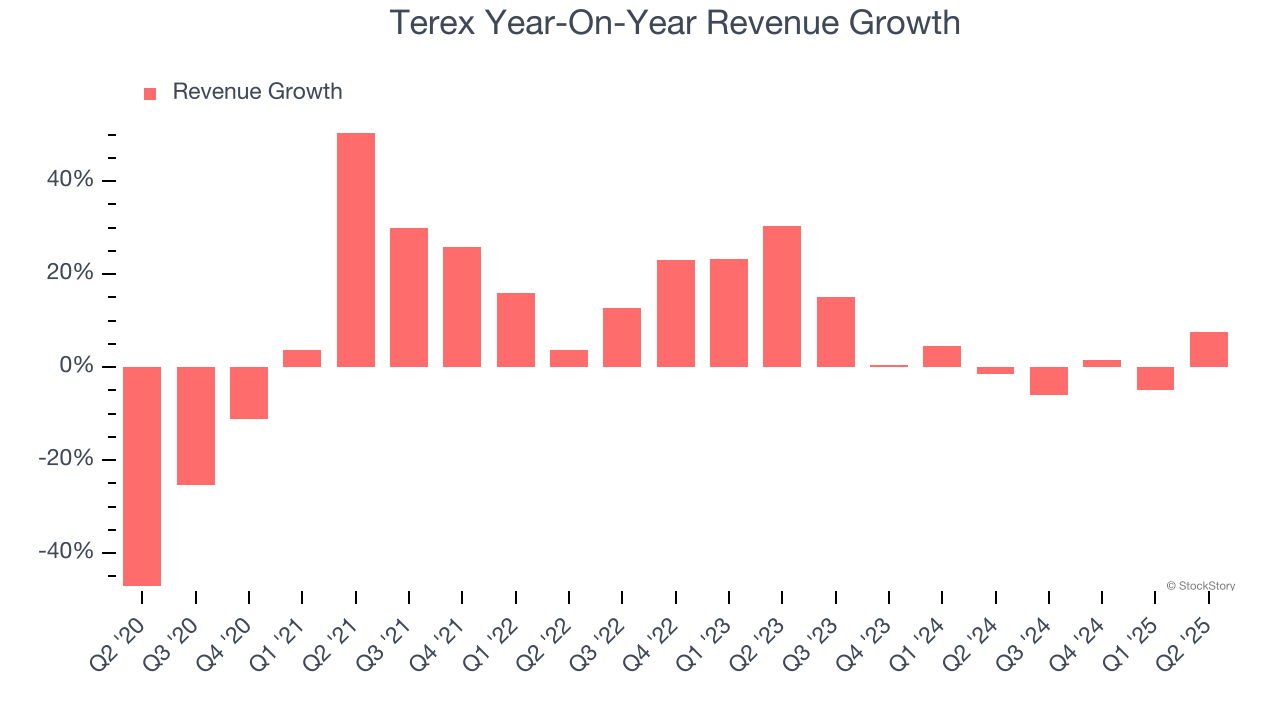
This quarter, Terex reported year-on-year revenue growth of 7.6%, and its $1.49 billion of revenue exceeded Wall Street’s estimates by 3.4%.
Looking ahead, sell-side analysts expect revenue to grow 5.6% over the next 12 months. While this projection implies its newer products and services will fuel better top-line performance, it is still below average for the sector.
Software is eating the world and there is virtually no industry left that has been untouched by it. That drives increasing demand for tools helping software developers do their jobs, whether it be monitoring critical cloud infrastructure, integrating audio and video functionality, or ensuring smooth content streaming. Click here to access a free report on our 3 favorite stocks to play this generational megatrend.
Operating margin is a key measure of profitability. Think of it as net income - the bottom line - excluding the impact of taxes and interest on debt, which are less connected to business fundamentals.
Terex’s operating margin might fluctuated slightly over the last 12 months but has remained more or less the same, averaging 9.5% over the last five years. This profitability was higher than the broader industrials sector, showing it did a decent job managing its expenses.
Looking at the trend in its profitability, Terex’s operating margin might fluctuated slightly but has generally stayed the same over the last five years. This raises questions about the company’s expense base because its revenue growth should have given it leverage on its fixed costs, resulting in better economies of scale and profitability.
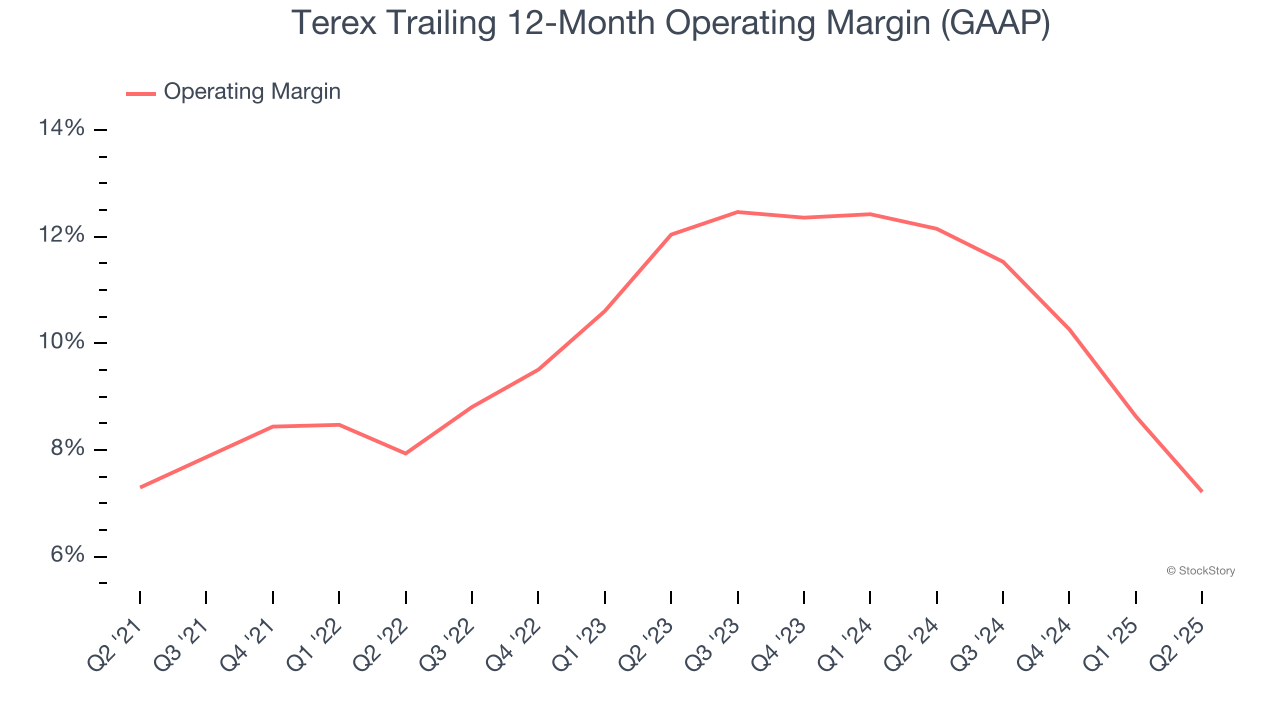
In Q2, Terex generated an operating margin profit margin of 8.7%, down 5.3 percentage points year on year. Since Terex’s operating margin decreased more than its gross margin, we can assume it was less efficient because expenses such as marketing, R&D, and administrative overhead increased.
We track the long-term change in earnings per share (EPS) for the same reason as long-term revenue growth. Compared to revenue, however, EPS highlights whether a company’s growth is profitable.
Terex’s EPS grew at an astounding 42.3% compounded annual growth rate over the last five years, higher than its 8.5% annualized revenue growth. This tells us the company became more profitable on a per-share basis as it expanded.
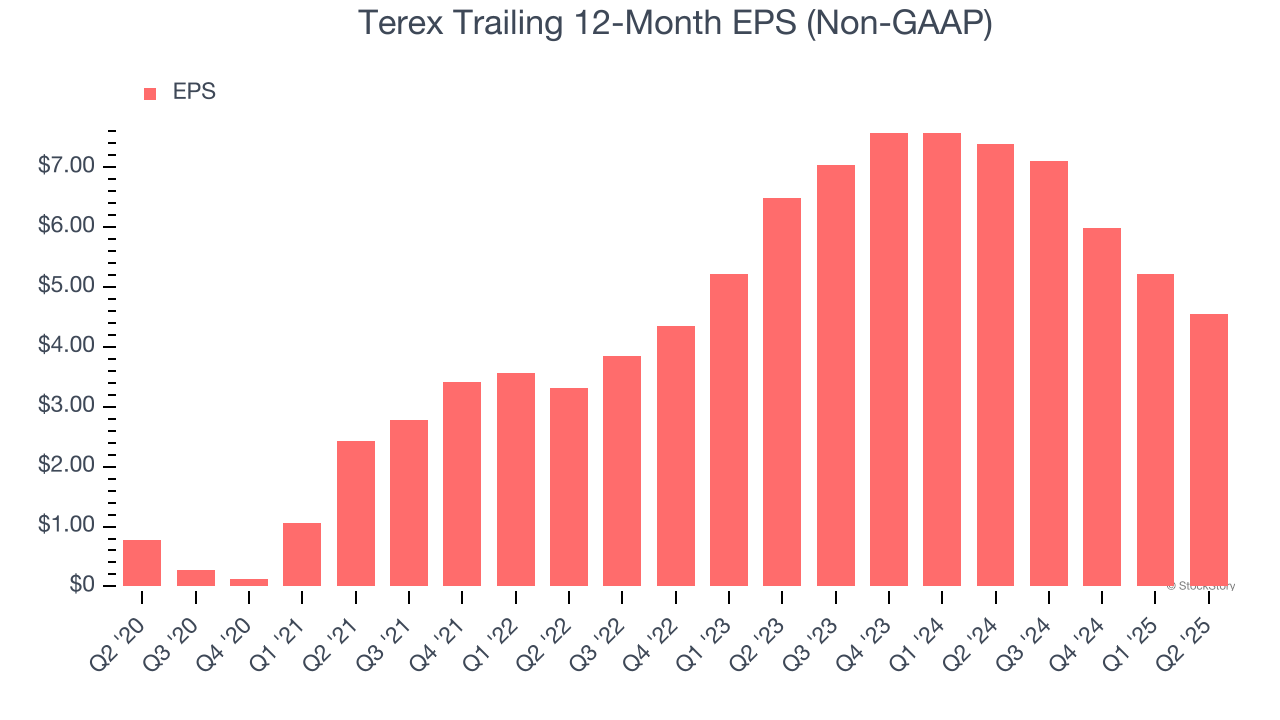
Diving into Terex’s quality of earnings can give us a better understanding of its performance. A five-year view shows that Terex has repurchased its stock, shrinking its share count by 4.9%. This tells us its EPS outperformed its revenue not because of increased operational efficiency but financial engineering, as buybacks boost per share earnings.
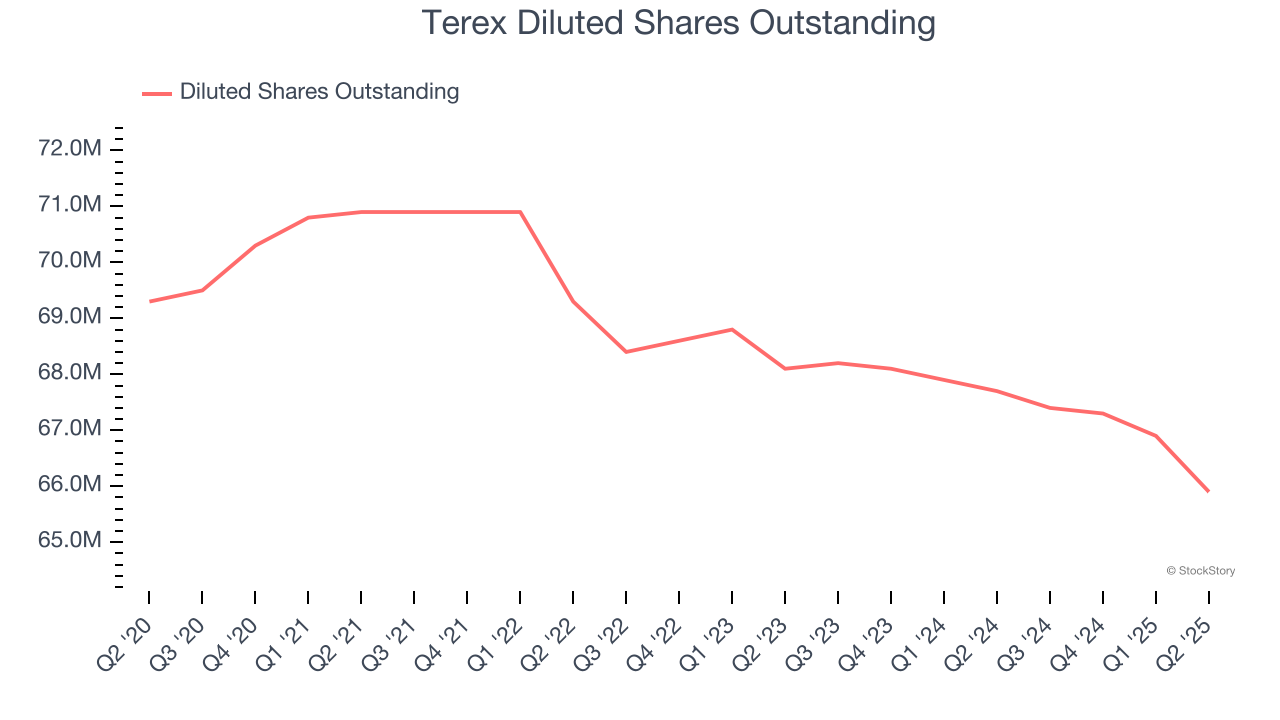
Like with revenue, we analyze EPS over a more recent period because it can provide insight into an emerging theme or development for the business.
For Terex, its two-year annual EPS declines of 16.3% mark a reversal from its (seemingly) healthy five-year trend. We hope Terex can return to earnings growth in the future.
In Q2, Terex reported adjusted EPS at $1.49, down from $2.16 in the same quarter last year. Despite falling year on year, this print beat analysts’ estimates by 6.5%. Over the next 12 months, Wall Street expects Terex’s full-year EPS of $4.55 to grow 10.3%.
We enjoyed seeing Terex beat analysts’ revenue expectations this quarter. We were also glad its full-year revenue guidance slightly exceeded Wall Street’s estimates. On the other hand, its full-year EBITDA guidance missed and its EBITDA fell short of Wall Street’s estimates. Overall, this was a softer quarter. The stock remained flat at $50.01 immediately following the results.
Should you buy the stock or not? What happened in the latest quarter matters, but not as much as longer-term business quality and valuation, when deciding whether to invest in this stock. We cover that in our actionable full research report which you can read here, it’s free.
| Dec-15 | |
| Dec-12 | |
| Dec-10 | |
| Dec-10 | |
| Dec-07 | |
| Dec-03 | |
| Dec-02 | |
| Nov-20 | |
| Nov-14 | |
| Nov-12 | |
| Nov-10 | |
| Nov-07 | |
| Nov-04 | |
| Nov-03 | |
| Nov-03 |
Join thousands of traders who make more informed decisions with our premium features. Real-time quotes, advanced visualizations, backtesting, and much more.
Learn more about FINVIZ*Elite